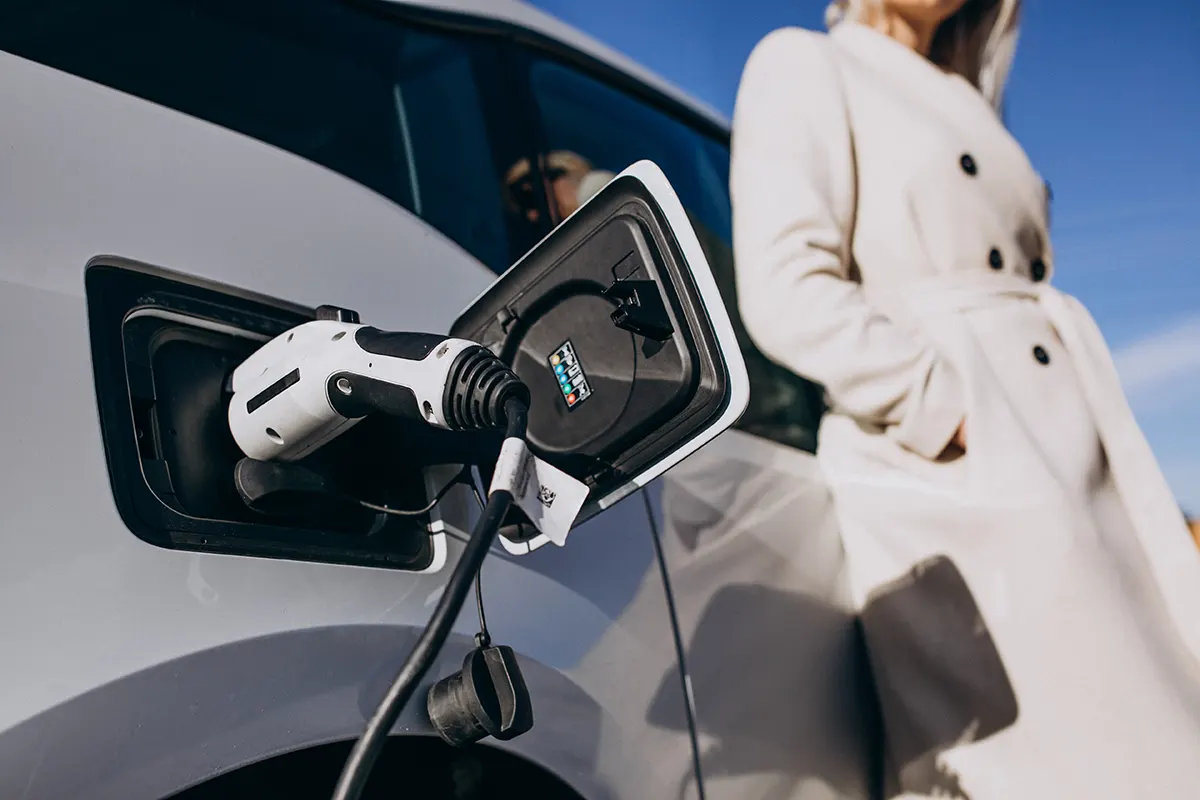
Electric vehicles are becoming increasingly popular, yet their charging process can confuse those who have yet to do it before. In this, we’ll walk through the steps to follow when charging an electric vehicle – from connecting it to a charging station and understanding how much charge you need to safety tips related to the process.
They are becoming increasingly popular as the technology develops and becomes more affordable. Many people are interested in electric vehicles but need help knowing where to start.
They are powered by electricity from batteries instead of gas or diesel. You can refuel an electric vehicle by plugging it into an outlet and charging the battery. Depending on the size of the battery, it can take anywhere from a few hours to a full day to charge an electric vehicle.
There are many benefits to driving an electric vehicle, including lower fuel costs, reduced emissions, and less maintenance than traditional gasoline-powered cars. Electric vehicles are also very quiet, which can be a nice change from traffic noise.
Understanding the Basics
Electric vehicles are becoming increasingly popular, as they offer a more sustainable and environmentally friendly option for transportation. However, charging an electric vehicle can be confusing, as a few options are available. In this blog post, we will explore the basics of electric vehicle charging so that you can make the best decision for your needs.
There are three main types of electric vehicle chargers: Level 1, Level 2, and Level 3. Each one offers a different level of charge speed, with Level 1 being the slowest and Level 3 being the fastest. The type of charger you will need will depend on your individual needs and preferences.
If you only drive short distances or do not mind waiting a bit longer for your car to charge, then a Level 1 charger will be fine. These chargers typically plug into a standard 120-volt outlet and can take up to 8 hours to fully charge an electric vehicle.
Level 2 chargers are a good option for those driving medium to long distances or needing their car to be charged more quickly. These chargers plug into 240-volt outlets and can charge an electric vehicle in 4-6 hours. Most public charging stations are Level 2 chargers.
Level 3 chargers are the fastest option available and can charge an electric vehicle in 30-60 minutes. However, these chargers require special equipment and infrastructure, so they are not as widely available as Levels 1 and 2 chargers.
Benefits of Electric Vehicle Charging
Electric vehicle charging has many benefits over traditional gas-powered vehicles. Electric vehicles produce zero emissions, so they’re much better for the environment. Electric vehicles are much cheaper than gas-powered ones since you only need to charge them up rather than buy/refill gasoline. Electric vehicles also have much better acceleration than gas-powered cars since electric motors provide instant torque. Finally, electric cars are very quiet, so you’ll never have to deal with noisy engine start-ups or engine idling again.
Types of Charging Stations
There are three electric vehicle charging station types: Level 1, Level 2, and Level 3.
Level 1 charging stations use a standard 120-volt outlet and deliver about four miles of range per hour. Level 1 charging stations are the most inexpensive option, but they also take the longest to charge an electric vehicle.
Level 2 charging stations use a 240-volt outlet and can deliver up to 25 miles of range per hour of charging. Level 2 charging stations are more expensive than Level 1 chargers, but they can significantly reduce the time it takes to charge an electric vehicle.
Level 3 charging stations, also known as D.C. fast chargers, use a 480-volt outlet and can deliver up to 100 miles of range per hour of charging. Level 3 chargers are the most expensive option, but they can charge an electric vehicle much faster than Level 1 or 2 chargers.
Home Charging Installation Options
There are three primary ways to charge an electric vehicle (E.V.) at home:
1. Standard 120-volt outlet (Level 1 charging): This is the simplest and most common home charging option. All E.V.s come with a Level 1 charger plugged into a standard 120-volt household outlet. It’s the slowest way to charge an E.V., taking about 8-12 hours to charge a typical battery fully. But it’s also the least expensive option since you don’t need to install any special equipment.
2. 240-volt outlet (Level 2 charging): A Level 2 charger uses a higher-voltage 240-volt circuit, like those used for large appliances. Level 2 chargers are faster than Level 1 chargers, typically adding 10-20 miles of range per hour of charging. They usually cost between $500 and $1,000, plus the installation.
3. Direct current (D.C.) fast charging: D.C. fast chargers are the quickest way to charge an E.V., typically providing 60-80 miles of range in just 30 minutes. However, they’re also the most expensive option, costing around $6,000-$10,000 for the equipment and installation. D.C. fast chargers have yet to be widely available, but they’re slowly being rolled out across the country.
With so many options available, it’s important to research and decides which option is best for you. In addition, you’ll want to make sure that you have the proper wiring and electrical service in place for whatever charging option you choose.
How to Charge an Electric Vehicle
If you’re lucky enough to own an electric vehicle, you’ll need to learn how to charge it. Charging an electric car is easy. Here’s a step-by-step guide on how to do it:
Find a charging station. If you need help finding one, the U.S. Department of Energy has a handy tool to help you locate a station nearby. Once you’ve found a station, park your car in an empty spot and plug the charging cable into your car’s port.
Activate the charger by swiping your card or entering your account information on the touch screen. Once the charger is activated, it will automatically start charging your car. Depending on the type of charger, it may take anywhere from 30 minutes to several hours to fully charge your car.
Once your car is fully charged, unplug the charger from your car and the charging station before you leave. Some chargers will automatically disconnect after some time, but it’s important to check.
Best Practices for Charging Safety
When charging an electric vehicle, always follow the best practices for safety. First and foremost, always charge your vehicle in a well-ventilated area. Second, never leave your vehicle unattended while it is charging. Third, always use the charger that came with your vehicle or a charger specifically designed for your make and model of an electric vehicle. Fourth, unplug the charger from your vehicle when finished charging. Lastly, never charge your electric vehicle in an enclosed space such as a garage.
Follow these best practices for charging safety to ensure optimal performance for your electric vehicle and charger. These safety procedures can help protect yourself and others from potential electrical hazards.
Charging an electric vehicle is very easy and convenient. Different chargers are available, from home wall boxes to public charging points. You can even find mobile chargers for electric vehicles that make it easy to charge your vehicle when you’re on the go. If you select the right charger for your electric vehicle, it can be an incredibly reliable tool for powering up whenever and wherever you need it.
Image by senivpetro on Freepik









